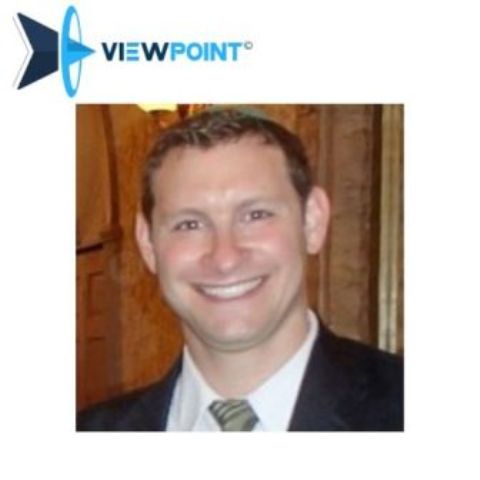Senior Finance & Operations Executive, Jason Brandler, is known for exploring the unknown, analyzing situations, rooting out roadblocks to progress, and continuously improving and increasing product values.
Below, we learn more about a significant impact that he made on his industry.
“The first major investment project that I managed was investigating the viability of initiating a ferry to provide service between Manhattan and nearby airports,” said Brandler. Ferry hydrofoil technology had the potential to provide a high speed, smooth trip with a low wake. However, upon delving into the details, he learned that not only could hydrofoil technology be a game changer for transportation to NYC airports, but it also had significant implications for oil rig staff transport, as employees travel to the rigs via helicopter which is expensive and the most dangerous part of their job.

Jason Brandler, Senior Finance & Operations Executive
Despite the benefits of hydrofoil ferries, Right Whale migration paths and feeding patterns presented a major obstacle preventing oil companies from using hydrofoils, as Right Whales hover at the water’s surface and pose a serious hazard. Right Whales are difficult to detect and would not only introduce catastrophic damage to a hydrofoil vessel if struck, but would be severely wounded or killed in such a scenario. Looking for a solution to resolve this issue led Brandler to the research being done at the University of St Andrews on the Mammalian Startle Reflex.
Researchers there were developing a device based on triggering a startle reflex to keep seals away from salmon farms. This type of startle device could potentially be modified to keep whales out of the pathway of hydrofoil vessels. However, due to the existing mature salmon market and the immediate investment potential, Brandler decided to focus most of the company’s energy into developing a marketable seal predation device based on this acoustic startle technology.
The exciting thing about the acoustic startle technology is its potential for widespread applications beyond protecting salmon farms and preventing whale strikes. Acoustic startle technology could be used to keep aquatic mammals out of harm’s way near underwater construction sites and keep predators away from livestock.
Most interestingly, “I was involved in discussions with several major car manufacturers about integrating the startle technology into their Advanced Driver-Assistance Systems (ADAS),” said Brandler. The current technology used in ADAS is potentially capable of detecting and identifying deer, and paired with Genuswave’s Startle technology could be effective at actively preventing deer- vehicle collisions.
Meeting regulation and certification requirements were the two most significant complications that had to be carefully managed. Even when there appeared to be a straightforward process, Brandler discovered that progress rarely proceeds in a smooth manner, with many ups and downs and unforeseen obstacles arising along the way. According to Brandler, “Every step was an active process. With the Acoustic Startle Technology ensuring environmental and social certification from the Aquaculture Stewardship Council (ASC) and compliance with the Marine Mammal Protection Act (MMPA) were crucial.”
For example, as the Genuswave technology is acoustic, it was an uphill battle to show that it is fundamentally different from other banned Acoustic Deterrent Devices. Customers were concerned that they could lose their environmental and social sustainability certifications if they employed a Genuswave product utilizing startle technology on their salmon farms. It was therefore necessary to obtain a variance from the organization that set the standards for the certification, the Aquaculture Stewardship Council (ASC). Brandler found that “the most effective way to obtain a variance was by working with a large Norwegian salmon producer that had many dealings with the ASC, as they had both the necessary experience in the area and had expressed serious interest in using our technology.” His team collaborated with them to craft a variance request to use the Genuswave technology. This request was approved, clearing a major hurdle for market acceptance.
Lessons learned:
- It is important to stay true to and follow one’s strategic vision with the readiness to pivot upon gathering additional data points. Be open to all interactions as opportunities and be creative in viewing where they might lead.
- Similarly, “In preparing for battle, I have always found plans are useless, but planning is indispensable”(Eisenhower) – expect plans, budgets, and timelines to evolve. Have a process in place to assess whether a change is appropriate/necessary and if implemented, know how it will impact the budget and timeline.
- Always maintain clear communications. Particularly in a disagreement – often times people talk at cross purposes. It is essential to truly appreciate and understand each other’s point of view, as parties can usually come to a common understanding once the points are clarified.
- There are always more opportunities. Do not worry that something is “once in a lifetime” and have a fear of missing out. Work hard; the next opportunity will find you.
Watch full video interview below.
Contact Jason Brandler via LinkedIn or his Career WebFolio.
Fred Coon, CEO
ViewPoint© is a production of The US AT Work Network© and Stewart, Cooper & Coon, a Human Capital Strategies Corporation. Contact: Fred Coon – 866-883-4200, Ext. 200, for more information.
© 2004-2021 Stewart, Cooper, & Coon, Inc. All rights reserved. Limited to personal use and allowable only if this copyright message is left intact. Any duplication, alteration, or publishing of this content without express company permission is prohibited. Contact fcoon@stewartcoopercoon.com.
